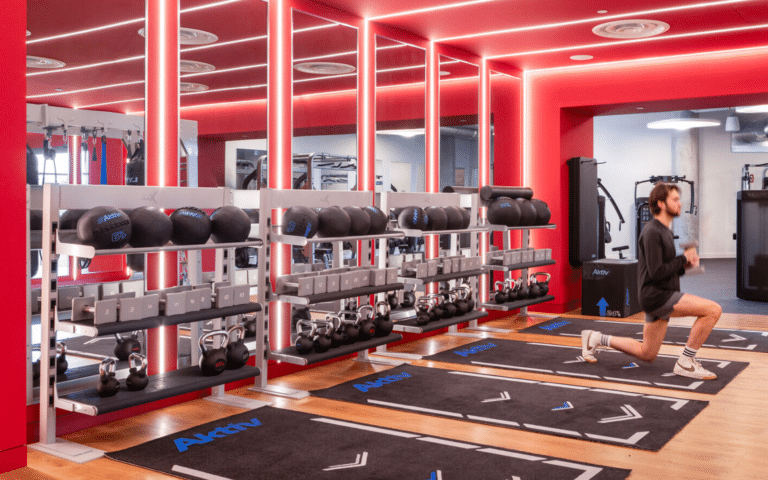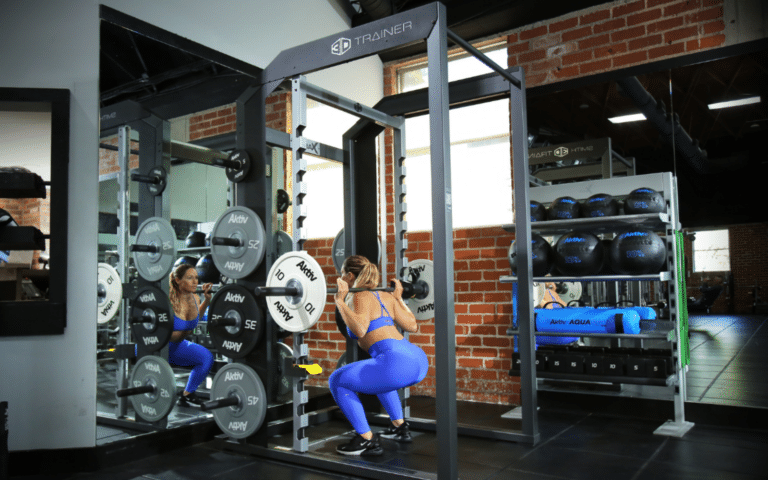Businesses and individuals across all categories and industries have been investing more time and effort over the past few years in being “green,” and sustainability in fitness is no exception.
Reducing waste and decreasing the impact that a fitness facility or wellness practice has on the environment not only allows individuals and companies to make a positive difference in their community and globally, and reduce costs, but it matters to their clientele as well. The fitness industry has been making headway with eco-friendly fitness over the last decade. It’s become so popular that recently the IDEA Fitness Journal published an entire issue about the many ways that the fitness industry has made positive changes, or can make changes, to be more energy-conscious and reduce waste. This includes facility and equipment design, education, technology, and policy.
Thinking ahead about how your fitness facility or amenity space operates, and what your brand stands for, is more imperative now than ever.
Design Your Eco-Friendly Wellness Space and Your Brand
The way your facility and brand appear to your clientele is not only an extension of what you do but who you are as a fitness professional or organization. Energy-conscious and eco-friendly designs let your community know that you care about creating a healthy space for them and the environment and convey the precision and effort you put into your offerings and services.
Whether you are designing a new facility or ready to make some positive changes, careful planning is key. Recycled building materials can be incorporated into the initial design of your space or as an upgrade and may save money. Efficient lighting, especially on a well-lit gym floor can make a huge difference in electrical costs. Incorporating building designs that utilize natural daylight can save an enormous amount of energy and costs as well. Water-efficient appliances and landscape design, paperless business transactions, and recycling and composting policies will make a valuable impact too.
Incentivizing and promoting eco-friendly events is another great way to make a positive impact on the environment. Get your community involved, and even encourage more healthy activities, like planning a beach clean-up day, or a clean-up hike at a nearby park. Not only will you and your community make an impact on the environment, but your organization will build a sustainable, green identity, and build a stronger relationship with your audience.

Equipment
Adapting and designing for current trends in the fitness industry offers great benefits for the environmentally conscious gym. The continually growing popularity of functional training, recovery, boutique-style fitness, and small group exercise lends to more green equipment options. There is a plethora of effective and exciting functional training accessories that are durable, long-lasting, and can be used without any energy or waste. Kettlebells or dumbbells made from urethane are easy to store and are long-lasting. Water-fillable products like the AKTIV AQUA are made of durable materials, adjustable to match the needs of different user abilities and offer a novel and effective experience for exercisers. Foam rollers made from recycled cork are a great option too.
Gym Rax® structures and training bays create immersive functional training spaces as small as the footprint of a treadmill and up to a functional occupancy of 15 or more people, while extensively expanding the offerings of the facility. According to an article by Energysage.com and data from U.S. Energy Information Administration, a reduction of 10 treadmills can reduce energy consumption by 12,480-kilowatt hours per year and save the operator thousands of dollars. This is a win-win for both the facility operator and users who want to work out in a space with little environmental impact.
Design for Efficient Capacity
Getting the most out of your square footage is a simple way to reduce your footprint and save some money on rent at the same time. A well-designed functional training area creates room for a multitude of workout and recovery modalities for a single user within the same footprint as a single treadmill.
The American College Of Sports Medicine recommends 10 to 14 square feet per member and 40 to 60 square feet per piece of fitness equipment. For example, a boutique studio may accommodate 20 members per class in a 400-square-foot space, while the cardio area of a health club might need nearly 1,000 square feet to serve the same amount of people. That’s a difference in 600 square feet!
Creating an outdoor fitness area is another way to be efficient with space and reduce energy waste and overhead costs for a fitness facility. Outdoor workout spaces have become popular recently of their own accord. The environmental aspect is just a bonus. Using valuable outdoor space, while integrating the existing environment, provides a great workout experience and further promotes your brand.
When considering a sustainable approach to your wellness facility or brand, consider the following and know that any amount of consideration for your environmental footprint can make a big difference:
- Functional training spaces are eco-friendly and allow for efficient occupancy.
- Give your community what they want and reduce energy costs by considering removing cardio equipment.
- Choose accessories made with sustainable materials.
- Choose adaptable structures and rigging to reduce future costs and waste.
- Consult with professionals to make the best decisions possible for your facility and community.
References:
https://news.energysage.com/how-many-watts-does-a-treadmill-use/
https://www.ideafit.com/business/sustainability-practices-in-fitness/




